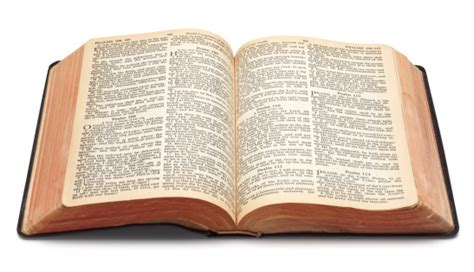The Sethite View Explained
The Sethite View (or "godly line" interpretation) arose early in Jewish and Christian thought (e.g., Julius Africanus, Augustine, Luther, Calvin) and became the standard view in much of the Reformed tradition. It argues that:
- the "sons of God" are the descendants of Seth, the line that "called on the name of the LORD" (Gen 4:26).
- the "daughters of men" are the descendants of Cain, whose line culminates in violent, godless figures like Lamech (Gen 4:19-24).
- the "marrying" of these two lines blurred the distinction between the righteous and the wicked, leading to universal corruption and the flood.
So, on this view, the narrative is not about angels mating with humans but about the collapse of moral and covenantal boundaries between those belonging to Yahweh and those who reject him—a theme that runs throughout the Old Testament.
Exegetical Arguments for the Sethite View
I would argue that the Sethite View preserves the covenantal and moral focus of Genesis. The flood comes not because of some mythic monsters but because
humanity's covenantal identity was collapsing. The godly line lost its distinction, the image-bearers abandoned their calling, and chaos was reasserting itself over creation.
Literary Context and Genealogical Continuity
Genesis 4–6 presents two genealogies: Cain's line (Gen 4:17–24) characterized by violence, polygamy, and self-exaltation, and Seth's line (Gen 4:25–5:32) characterized by worship and faith (e.g., Enoch "walked with God").
The immediate literary context suggests that these two lines are meant to be contrasted, climaxing in their intermingling in 6:1–5. The
toledot structure of Genesis—the section divisions marked by "these are the generations of ..."—reinforces this continuity between chapters 4–5 and 6:1–5. The narrator traces the spread of corruption from Cain's line into Seth's, explaining how the earth becomes filled with violence and wickedness (6:11–12).
This view maintains the integrity of Genesis as a unified primeval history focused on human rebellion and divine response, not on angelic intrusion.
The Idiomatic Range of "Sons of God"
While
bene-ha’elohim can indeed refer to divine beings (cf. Job 1:6; 2:1; Ps 29:1; 89:6), it can also function covenantally, referring to those in special relationship with God. For example:
- Deut 14:1 – "You are the sons of the LORD your God."
- Exod 4:22 – "Israel is my firstborn son."
- Hos 1:10 – "You are sons of the living God."
So, the term can describe a
class of people defined by divine election or relationship, not just celestial beings. In Genesis 6, the covenantal contrast between two lines—those who call on the LORD vs. those who do not—fits naturally with this idiom.
Thematic Parallel: Intermarriage Leading to Corruption
The pattern of intermarriage between the righteous and the wicked leading to apostasy is repeated throughout the OT:
- Gen 24:3; 26:34-35; 28:1-2 – Abraham and Isaac warn against intermarrying with Canaanites.
- Exod 34:16; Deut 7:3-4 – Israel forbidden to intermarry with pagan nations "for they will turn away your sons from following me."
Genesis 6:1-5 prefigures this same covenantal danger. It portrays the first instance of the faithful line compromising through mixed allegiance, resulting in universal moral decay—a precursor to Israel's own later covenantal failures.
Structural and Theological Coherence
Genesis 6:5 summarizes the moral state of the world:
"The LORD saw that the wickedness of humankind had become great on the earth. Every inclination of the thoughts of their minds was only evil all the time."
The entire focus remains on
human depravity (
raʿat ha’adam), not angelic transgression. To read "sons of God" as angels introduces an abrupt ontological shift that fragments the narrative. The Sethite view maintains a consistent anthropological focus: the corruption of humanity as the rationale for the flood.
Theological Coherence via Analogia Fidei
The
analogia fidei principle—that scripture interprets scripture, and no interpretation may contradict the whole counsel of God—further supports this view:
- Jesus identifies the days of Noah as characterized by ordinary human activity (“eating and drinking, marrying and giving in marriage,” Matt 24:38), not by the intrusion of angels or demigods.
- Angels, being asexual spirits, “neither marry nor are given in marriage” (Matt 22:30). Thus, an angelic reading introduces a biological absurdity inconsistent with biblical angelology.
- The broader canonical theme from Genesis to Revelation consistently locates the problem of sin within human rebellion, not hybrid offspring.
Therefore, the Sethite view aligns both anthropologically (sin is human) and theologically (judgment is covenantal) with the Bible's overarching story.
The Nephilim Problem
The mention of the Nephilim (v. 4) does not require an angelic interpretation. The Hebrew term
nephilim (נְפִילִים) likely derives from
npl ("to fall") and means "fallen ones" (or "violent ones"). The Septuagint translates it as
gigantes (γίγαντες)—not "giants" in the modern sense, but mighty men, warriors, or tyrants.
Thus, the text is saying that human corruption produced a class of powerful, violent men—"men of renown" (v. 4). The moral emphasis remains human, not hybrid.

